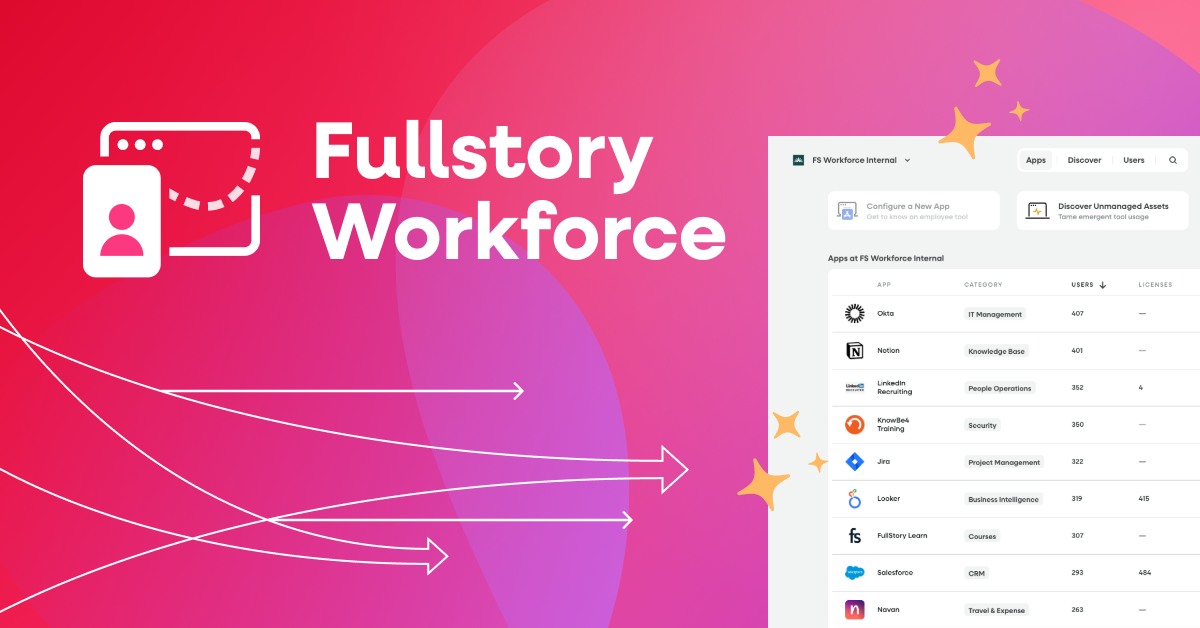When it comes to building products and experiences, people are people—no matter the context. From a consumer shopping for a pair of jeans or an IT pro navigating new cybersecurity software, the factors that underpin a great digital experience transcend industries and personas.
According to Ingrid Cruz, Fullstory’s Head of Product Design, there are three tiers to building a truly great digital user experience. The system looks like this:
This pyramid, the Experience Quality Index, outlines the three must-haves for an exceptional digital experience: Value, Ease of Use, and Delight.
Let’s look at what each of these tiers means and why they’re all critical parts of the anatomy of a stellar site, product, or app.
This blog post is adapted from Ingrid’s workshop at Spark 2022, The anatomy of a great user experience.Watch the complete session here.
Foundational tier: Value
Tl;dr: If your product or service doesn’t solve a problem or deliver a benefit, nothing else matters.
Think about a time you’ve booked a flight. There are many considerations: price, number of stops, layovers, and many more. Despite all of these factors, there’s an underlying assumption that the airline will get you safely to your destination—that’s its value.
Let’s dig deeper into this scenario. You’ve booked a flight and arrived at your gate at the airport. You’re hungry, but don’t have enough time to buy a snack before the flight begins boarding. At that moment, a flight attendant appears with a cart of donuts and coffee. They bring you one and you’re delighted—your morning has gone from fine to great.
Just as you’ve settled in with your delicious snack, the worst happens. Your flight gets canceled. The donuts and coffee were a delightful surprise, but they were negated by the airline failing to deliver the value you had counted on.
This is why value is at the base of the pyramid—without value, none of the delightful perks matter. And the more valuable the thing you deliver, the more inconveniences people are willing to deal with to get it.
In order to have value, your company has to solve a problem or deliver a benefit. If value doesn’t exist, then the user experience doesn’t matter. Here are three questions to ask when building for value:
Am I solving a problem or delivering a benefit to my customers or users? Look for evidence to support your belief that something is worth investing time in. Ideally you have a mixture of behavioral and attitudinal evidence.
Is the problem strongly felt by a significant number of users? Sometimes the loudest voices get the most attention, but that doesn’t mean that a problem is widespread.
Are people making an effort to solve this problem or achieve this benefit today? The most reliable evidence that a problem is worth investing in is if people are already trying to solve it in on their own. For example, you might build a product that automates something people are manually doing in spreadsheets.
Once you’ve made sure that your product or service has value, you can turn your focus to ease of use.
Second tier: Ease of use
Tl;dr: For a user to complete the behavior you want them to (like adding an item to their cart), they need high motivation and high ability to do so. It’s important to understand your users in order to both eliminate friction and tailor the experience to speak to their motivations.
No one sets out to make a product or website difficult to use, but exploring the latest UX trends can offer fresh insights into what makes an experience seamless.
We can think of ease of use as the friction that exists between the customer and the value. This might be complexities in the experience, unanswered questions, usability issues, cost barriers, gaps in your offering, or any number of other potential frustrations.
Getting people to use your product or site—to reach the value—is a mixture of tactical elements and behavioral science. Just because a person can doesn’t mean they will.
BJ Fogg, a professor at Stanford University, developed the B=MAP formula for behavioral change. He posits that three elements need to exist for a behavior to occur:
Behavior = Motivation, Ability, and Prompt
When a behavior doesn’t occur (like if a shopper doesn’t complete their purchase on your site), one of these elements is missing. For a user to do what you want them to do, they need high motivation and high ability. If you prompt something (like Add to Cart) where the motivation is low and the task is hard to do, the behavior will likely not happen. On the flipside, when motivation is high and it’s easy to do, the behavior will likely occur.
This is why knowing your users is so important. If you understand them, you can tailor the experience in a way that has low friction and also speaks to their motivations.
Here are three questions to ask when building for ease of use:
What do we want the customer to do?
What are the obstacles to achieving this action right now? (Pro tip: This is where behavioral data becomes a superpower, letting you look at overarching trends and then zoom into individual user sessions.)
How can we speak to their motivation?
Top of the pyramid: Delight
Tl;dr: Delight at the expense of value doesn’t accomplish anything. You can only deliver value to your customers or users when you’ve already mastered value and ease of use.
Take a second to think about a product or company that you could be a paid spokesperson for. Why do you brag about them?
Often, when we become raving fans of a product, it’s because we feel an emotional connection. Maybe they gave you a great customer service experience, or met a need you didn’t know you had. Emotional connection isn’t rational—it doesn’t necessarily mean that this product or service is better than other.
Let’s think back to the airport scenario. Getting the donut was a delightful experience, but it was ultimately overshadowed when the value was removed by the flight getting canceled. Without value, delight means nothing. Delight lives at the top of the pyramid because it stands on the shoulders of the other two elements—it’s only impactful when you already have value and ease of use.
Here are three considerations when building for delight:
Address the unspoken. What needs or wants can you anticipate for your users? In the airport scenario, the flight attendant didn’t know you were hungry, but looked for an opportunity to create delight.
Apply empathy. How can you be proactive about what customers need and want? Where can you anticipate frustrations?
Go beyond the happy path. It’s important to recognize that users sometimes take different paths to their goal, and they shouldn’t encounter more friction for taking an unexpected journey.
To quickly recap: Value is the foundation your product or service should be built on. If you’re not solving a problem or delivering a benefit, you won’t get far. Ease of use is the next critical factor; think about how to remove friction from the user’s path to value. Once those are in place, find ways to build emotional connections with your users through delightful experiences.



